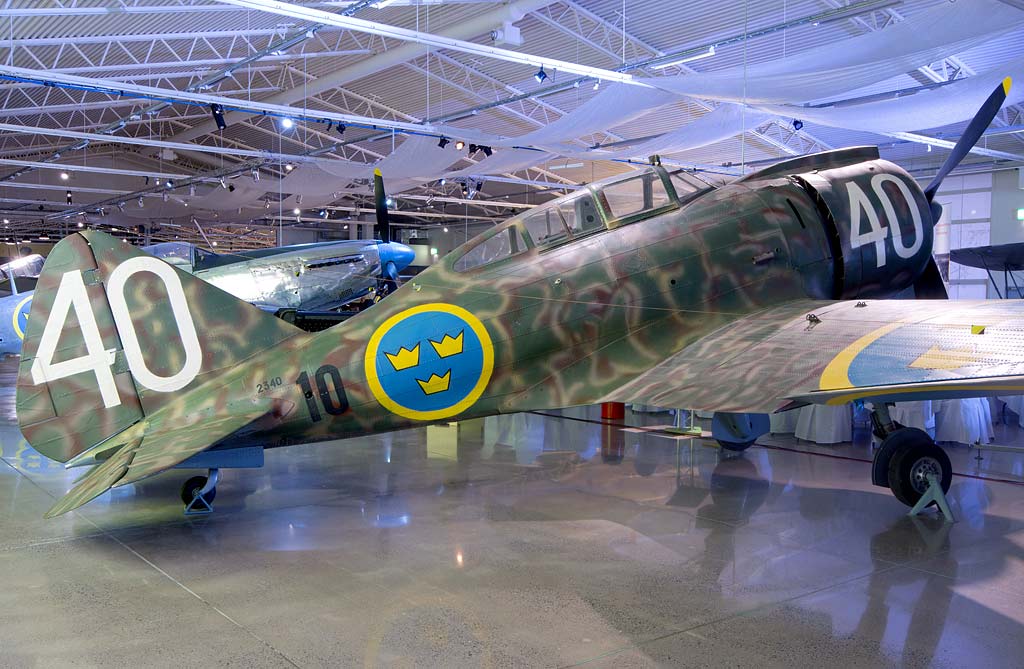The Reggiane Re.2000, an Italian WWII-era fighter, featured a Piaggio P.XI radial engine, monoplane design, and was known for its agility and robust structure.
This article explores the Reggiane Re.2000, an Italian fighter aircraft from World War II. It delves into the history, design, performance, and military use of the aircraft, offering a comprehensive overview of its development, technical specifications, combat roles, and its place in aviation history.
The Reggiane Re.2000 was an Italian fighter aircraft that played a notable role during World War II. As a product of Reggiane, it reflected the era’s advanced aeronautical engineering and Italy’s ambition to strengthen its air force capabilities. This article aims to provide an in-depth understanding of the Re.2000, its development, design, performance, and military significance.
History of the Development of the Reggiane Re.2000
The Reggiane Re.2000 was born out of Italy’s need to modernize its air force in the late 1930s. During this epoch, European powers were rapidly advancing in aviation technology, leading to a race for air superiority. Recognizing this, the Italian government, specifically the Regia Aeronautica (Royal Italian Air Force), initiated the development of a new generation of fighter aircraft.
The project was undertaken by the Reggiane company, a then-emerging name in aviation. The development program was launched under the guidance of chief designer Roberto Longhi. The Re.2000, taking its first flight on May 24, 1940, represented a significant leap in Italian aircraft design, incorporating innovative features for its time.
While the Re.2000 did not receive a specific NATO nickname, which was more common during the Cold War era, its design and performance earned it significant attention. The aircraft was conceptualized to fulfill multiple roles, including interceptor, escort fighter, and reconnaissance, catering to the diverse tactical needs of the Italian air force.
Design of the Reggiane Re.2000
The Reggiane Re.2000 showcased a cutting-edge design for its time. It was a single-engine, low-wing monoplane, featuring an all-metal structure with a retractable undercarriage. The aircraft was powered by a Piaggio P.XI RC.40 radial engine, capable of delivering 986 horsepower (736 kW). This powerplant was enclosed in a well-streamlined cowling, enhancing aerodynamics.
In terms of dimensions, the Re.2000 spanned 36 feet (11 meters) in length and had a wingspan of 36 feet 1 inch (11.01 meters). Its design allowed for a maximum takeoff weight of approximately 5,952 pounds (2,700 kilograms). The aircraft’s robust structure provided enhanced durability, but this also resulted in a relatively heavier weight compared to some contemporaries.
One of the design drawbacks was its limited fuel capacity, which affected its operational range. Nevertheless, the Re.2000’s agility and sturdy construction made it a formidable aircraft in various scenarios.

Performance of the Reggiane Re.2000
The performance of the Reggiane Re.2000 was marked by its powerful engine and well-crafted aerodynamics. The Piaggio P.XI engine enabled the aircraft to reach a top speed of around 330 miles per hour (531 kilometers per hour). It could climb to an altitude of 20,000 feet (6,096 meters) and had a range of 715 miles (1,150 kilometers).
When compared to its contemporaries, the Re.2000 was competitive, though it faced stiff competition from other European fighters like the British Supermarine Spitfire and the German Messerschmitt Bf 109. These aircraft were often faster and had better range, but the Re.2000’s robust design and agility in air combat were its notable strengths.
Military Use and Combat of the Reggiane Re.2000
The Re.2000 was armed with two 12.7 mm Breda-SAFAT machine guns, providing effective firepower for its time. It saw combat in various theaters during World War II, including in the Mediterranean and on the Eastern Front.
The aircraft was used by the Regia Aeronautica for fighter and reconnaissance missions, and it was involved in several notable engagements. Its performance in combat was generally well-regarded, particularly for its maneuverability and durability under fire.
The Re.2000 was also exported to other countries, including Hungary and Sweden, highlighting its international appeal. However, as the war progressed, it was gradually replaced by more advanced aircraft like the Re.2005 and other contemporary fighters.
By the end of World War II, the Re.2000 had been phased out in favor of newer, more advanced aircraft designs. It no longer remains in active service, but its contribution to military aviation during a critical period in history remains significant.
The Reggiane Re.2000 stands as a testament to Italian aeronautical engineering during World War II. Its development and deployment reflected the era’s technological advancements and the tactical demands of aerial warfare. Although it faced certain limitations and stiff competition, the Re.2000’s robust design, respectable performance, and versatility in combat roles marked it as a noteworthy fighter in the annals of military aviation history.
Back to the Warbirds section.